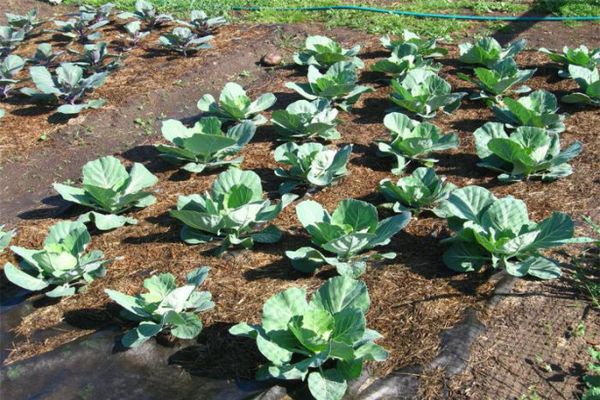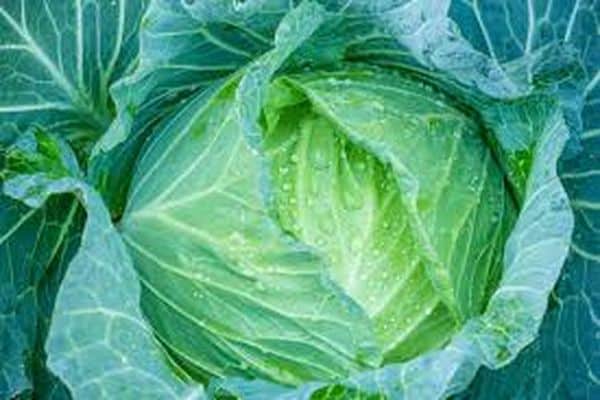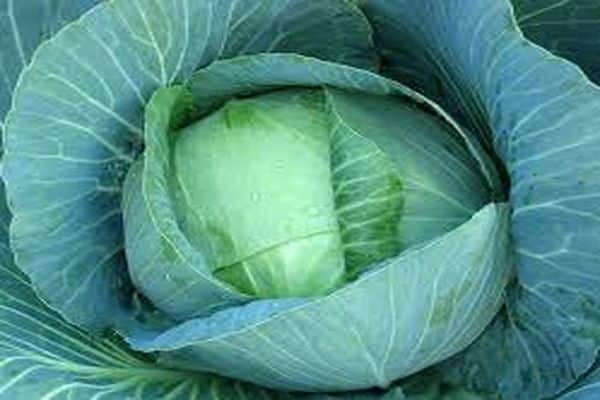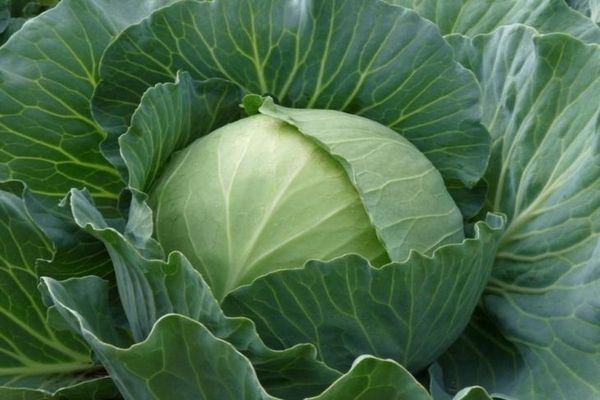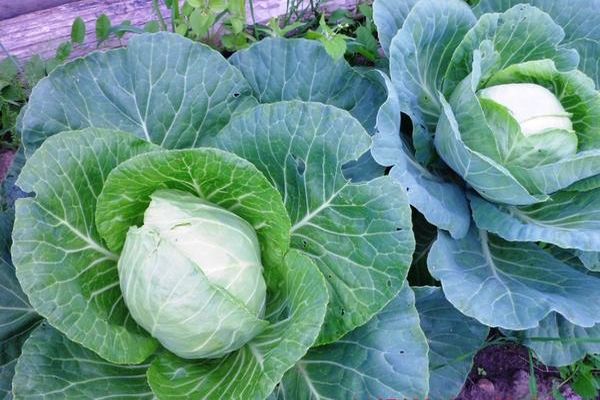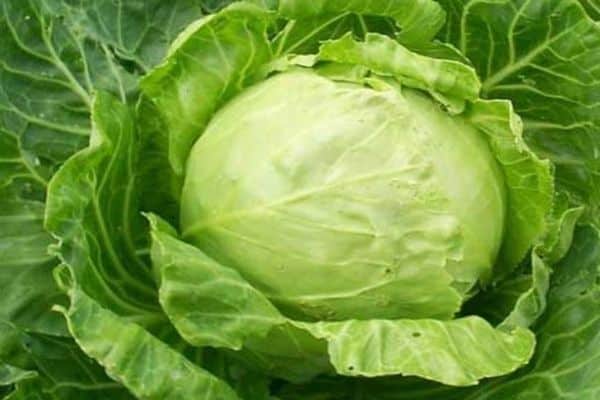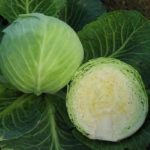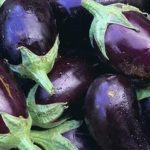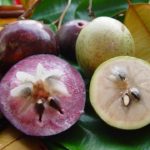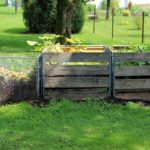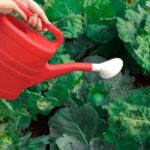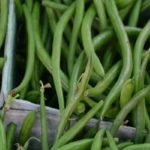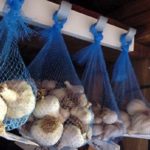Breeders are constantly developing new varieties and hybrids of cabbage. Those involved in the cultivation have to take into account many aspects when growing: duration of ripening, storage conditions, taste characteristics. One of the varieties of white vegetables in demand among gardeners is Zimovka cabbage.
Description of the variety
The semi-spreading head of cabbage has a medium or large size with a diameter of over 70 centimeters. The rounded sheets of gray-green color have a pronounced waxy coating, soft veins and wavy edges.
These characteristics of the vegetable make it possible to ensure its long-term storage.The average length of the leaf blade is 40–50 cm, width — 32–45 cm. The leaves fit very tightly to each other and there are minimal gaps between them, despite the thin internal structure. A mature wintering head of cabbage weighs between 2 and 3.5 kilograms, but with proper care it can reach a greater weight without loss of taste.
Growing
Vegetable seedlings can grow and retain beneficial properties only when kept in greenhouse conditions. The final quality of the heads of cabbage will depend on the seed fund, so when choosing seeds it is important to consider the goals of growing the crop. In most cases, wintering is sown in early April, after which it takes up to 50 days for seedlings to form.
It is best to leave the seedlings in a ventilated room at a temperature of about 10 degrees. At night, an additional source of lighting should be provided. The soil should be moderately moist and the soil should not dry out. The first shoots begin to appear 5 days after planting. A week after germination, it is recommended to treat the soil with a weakly concentrated solution of potassium permanganate.
It is important to choose the right place for the bed where Wintering will be planted, the description of which assumes warm climatic conditions.
The culture needs a lot of natural light, and in the shade the sprouts begin to quickly stretch and bloom without forming a head of cabbage. Even if the head of cabbage ripens in a dark place, it may turn out to be rotten and loose.
Features of care
The Zimovka variety is quite unpretentious in care and even with poor soil fertility, gardeners can achieve a good harvest. To do this, you need to follow several rules of care:
- When the seedlings of the crop sprout and get stronger, they can be planted, which will increase the space for nutrition.
- When removing seedlings, you need to water the soil well so that a lump of soil remains on them.
- When transplanting plants into another container or garden bed, the root is shortened by a third.
- The plant should be watered no more than 1-2 times a week, taking into account atmospheric conditions. With excess moisture, cracks and rot may occur on the surface of the heads of cabbage. Damaged fruits cannot be stored.
For proper and stable growth of the crop, suitable fertilizing is required throughout the entire ripening period. The first portion of fertilizer is added to the soil before sowing the seeds. Wood ash, sawdust and rotted mullein are placed in the sowing holes.
At the stage of formation of the third leaf, the time for the next feeding approaches. Two weeks before this moment, you need to soak the bird droppings in water, wait until the fermentation process stops, add water and carefully pour the solution over each seedling. First, the beds should be watered generously with plain water. After the forks are formed, the bushes are watered with a solution of 10 liters of water with 30 grams of superphosphate.
If necessary, a number of other standard soil fertilizers can be used, depending on the stages of maturation and the presence of diseases in plants.
Advantages and disadvantages
The great demand for wintering cabbage among summer residents and gardeners is explained by the presence of a number of comparative advantages. These include:
- Harvest stability. From one square meter of planting you can collect up to 7 kilograms of mature heads of cabbage.
- Frost resistance.Fruits are able to endure light frosts within -5 degrees at any stage of ripening, without loss of beneficial characteristics.
- Variability of use. Zimovka variety cabbage has a universal purpose and can be used for pickling, pickling or long-term winter storage.
- Marketable condition. The heads of cabbage do not fade and do not separate in the beds under the influence of the sun and various precipitation, as well as during long-term storage.
- Transportability. When transporting the crop, the heads of cabbage do not crack or rot if standard conditions are met.
- Good immunity. The white vegetable is famous for its resistance to gray rot and spot necrosis, which has a positive effect on its preservation.
- Vitamin composition. Wintering contains a large amount of minerals and vitamins, including ascorbic acid and sugar.
Negative quality can only be attributed to the slight bitterness of the vegetable immediately after harvest and during the first 2–3 months of storage. It is recommended to eat wintering heads of cabbage after this period, when the taste properties improve and fully develop. From the second half of winter, it is best to use cabbage for preparing salads, soups, and also fresh.
Pests and diseases
Unlike modern hybrid varieties, Zimovka most often suffers from diseases such as various forms of bacteriosis, downy mildew and blackleg. To prevent the spread of these diseases, the crop should be sprayed with Fitosporin before tying the forks.
If the cabbage heads are planted in a dark or very damp place, they may be affected by cruciferous flea beetle.The insect leaves holes on the leaves of the plant, which spoils the appearance of the crop and negatively affects its taste. To combat flea beetles, you can periodically sprinkle the plants with a mixture of wood ash and red pepper powder.
White butterflies, which lay larvae in the leaves of the developing head of cabbage, also cause enormous damage to cabbage. The hatching caterpillars begin to actively eat the fruit from the inside. To eliminate pests, you can use a soap solution or special pesticides.
If you find slugs and grape snails in the beds, you can remove the pests with your hands. Gardeners also often use bait in the form of cut cucumbers or zucchini to repel insects.
Harvest and storage
Wintering, as the description of the variety says, is subject to long-term storage and fermentation. The vegetable should be removed from the garden in mid-October, subject to dry weather. If you want to leave the head of cabbage for winter storage, you do not need to remove the outer stump, since the vegetable is hung from it.
The optimal temperature in the storage of cabbage crops is 0–2 degrees. Under such conditions, you can leave the cabbage on shelves or in special boxes.
For better preservation, you can sprinkle the fork with crushed chalk. This will not only preserve the taste of the vegetable, but will also have a beneficial effect on its presentation.
Reviews from gardeners
Alena, Stavropol: “I’ve been growing this variety for three years. Every time the harvest is stable and I hardly encounter any pests. The preservation is very good and there is always fresh cabbage in the cellar. Ideal for a variety of pickles and fresh, much tastier than other varieties.”
Maria, Belgorod: “I planted Zimovka for the first time and, surprisingly, it is a very productive variety.She collected more than 100 kg, most of which she left to be stored for the winter. Over time, the taste only opens up and becomes much better.”

